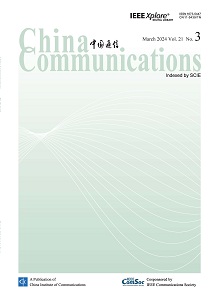REVIEW PAPER
Mao Haobin, Liu Yanming, Zhu Lipeng, Mao Tianqi, Xiao Zhenyu, Zhang Rui, Han Zhu, Xia Xianggen
Space/air communications have been envisioned as an essential part of the next-generation mobile communication networks for providing highquality global connectivity. However, the inherent broadcasting nature of wireless propagation environment and the broad coverage pose severe threats to the protection of private data. Emerging covert communications provides a promising solution to achieve robust communication security. Aiming at facilitating the practical implementation of covert communications in space/air networks, we present a tutorial overview of its potentials, scenarios, and key technologies. Specifically, first, the commonly used covertness constraint model, covert performance metrics, and potential application scenarios are briefly introduced. Then, several efficient methods that introduce uncertainty into the covert system are thoroughly summarized, followed by several critical enabling technologies, including joint resource allocation and deployment/trajectory design, multi-antenna and beamforming techniques, reconfigurable intelligent surface (RIS), and artificial intelligence algorithms. Finally, we highlight some open issues for future investigation.
